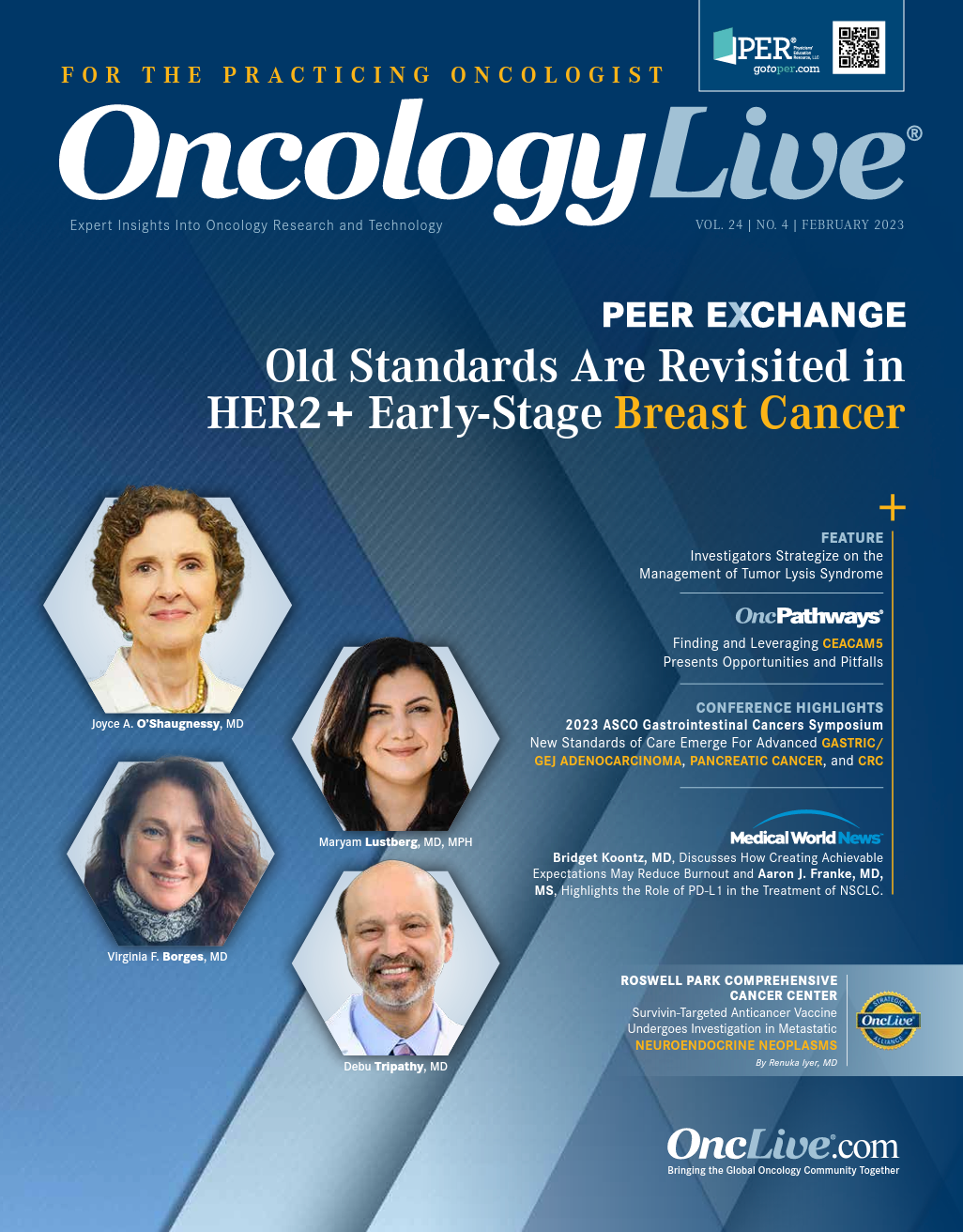Publication
Article
Survivin-Targeted Anticancer Vaccine Undergoes Investigation in Metastatic Neuroendocrine Neoplasms
Novel treatment options are needed in neuroendocrine tumors, and advances in immunotherapy have not been optimized in this population.
Renuka Iyer, MD

Increasing in incidence, neuroendocrine neoplasms include a spectrum of tumors that arise from the specialized cells of the neuroendocrine system.1,2 Unfortunately, the majority of neuroendocrine tumors (NETs) present in advanced stages and treatment options are limited to somatostatin analogues, radiopeptide therapy, everolimus (Afinitor), and a few chemotherapy and liver-directed options. Novel options are needed, and advances in immunotherapy have not been optimized in NETs.
To identify novel immune approaches to treat NETs, we explored survivin as a target. Survivin is a ubiquitous protein expressed in various cancer cells, such as glioblastoma, multiple myeloma, and others. Expression of survivin is associated with increased resistance to therapy through inhibition of apoptosis and enhanced cell proliferation.3-5 Recently, our colleagues from Roswell Park Comprehensive Cancer Center reported findings from a phase 2a study (NCT024455557) showing encouraging survival with SurVaxM, an antisurvivin peptide conjugate vaccine in patients with newly diagnosed glioblastoma.6
To learn how prevalent survivin expression is in NETs, we examined NET samples from patients with all grades of cancer and found that survivin expression was a prognostic marker of aggressive biology and shorter survival and correlated with high Ki-67 index.7
Survivin was present (≥ 1% or higher) in 51.5% of all NETS that we tested. It was more prevalent in lung NETs (59%), followed by gastrointestinal-pancreatic NETs (16%). Lung NETs are generally aggressive, are associated with poor overall survival of approximately 17 months, have few therapeutic options, and are underrepresented in clinical trials.7 Thus, targeting survivin in NETs has the potential to treat refractory and progressing metastatic NETs that express this protein. We are conducting a pilot study in this group with funding from the Neuroendocrine Tumor Research Foundation.8
The key eligibility for this phase 1 study (NCT03879694) of safety and immunogenicity of a SurVaxM in patients with survivin-positive metastatic NETs and neuroendocrine carcinomas (NECs) include the following, biopsy proven NETs or NECs with RECIST 1.1 disease progression within the past 6 months on 2 successive CT scans, and survivin expression confirmed by immunohistochemgranulocyte-macrophage colony-stimulating factor sargramostim (Leukine) at 0, 2, 4, and 6 weeks followed by booster injections every 3 months until tumor progression. Response is assessed with CT scans and immune markers (antibodies and T cells) at baseline, 6, 9, and 12 months. The primary end points of this study are to assess safety, tolerability, and toxicity of this combination. Secondary objectives are assessed in the form of clinical benefit and include rate of progression, immunogenicity measured by antisurvivin IgG levels in serum, survivin specific cytotoxic T lymphocytes, and time to progression.9
SurVaxM has been well tolerated in the first 11 patients enrolled, with 2 injection site events (both grade 1) and 1 unrelated cardiac event. Our interim analyses have shown 3 patients with stable disease, including 1 with a high-grade neuroendocrine carcinoma who had disease control for 9 months and 1 with a gastrointestinal NET who had disease control for 3 years.
To date, patients with prolonged stable disease had high antibody responses, as were observed in the newly diagnosed glioblastoma study, but the sample size here is too small to be conclusive. As we continue enrollment and immune biomarker analysis, we expect to move these findings to larger studies and explore combinations with other potentially synergistic agents.
References
- Yao JC, Hassan M, Phan A, et al. One hundred years after “carcinoid”: epidemiology of and prognostic factors for neuroendocrine tumors in 35,825 cases in the United States. J Clin Oncol. 2008;26(18):3063-3072. doi:10.1200/JCO.2007.15.4377
- Dasari A, Shen C, Halperin D, et al. Trends in the incidence, prevalence, and survival outcomes in patients with neuroendocrine tumors in the United States. JAMA Oncol. 2017;3(10):1335-1342. doi:10.1001/jamaoncol.2017.0589
- Altieri DC. Survivin, versatile modulation of cell division and apoptosis in cancer. Oncogene. 2003;22(53):8581-8589. doi:10.1038/sj.onc.1207113
- Fukuda S, Pelus LM. Survivin, a cancer target with an emerging role in normal adult tissues. Mol Cancer Ther. 2006;5(5):1087-1098. doi:10.1158/1535-7163.MCT-05-0375
- Mita AC, Mita MM, Nawrocki AT, Giles FJ. Survivin: key regulator of mitosis and apoptosis and novel target for cancer therapeutics. Clin Cancer Res. 2008;14(16):5000-5005. doi:10.1158/1078-0432.CCR-08-0746
- Ahluwalia MS, Reardon DA, Abad AP, et al. Phase IIa study of SurVaxM plus adjuvant temozolomide for newly diagnosed glioblastoma. J Clin Oncol. 2022;JCO2200996. doi:10.1200/JCO.22.00996
- Hanif A, Lee S, Gupta M, et al. Exploring the role of survivin in neuroendocrine neoplasms. Oncotarget. 2020;11(23):2246-2258. doi:10.18632/oncotarget.27631
- NETRF announces $2.5 million in research to advance the NETs. Neuroendocrine Tumor Research Foundation. February 1, 2019. Accessed January 30, 2023. bit.ly/40gcOWa
- A pilot study of SurVaxM in children progressive or relapsed medulloblastoma, high grade glioma, ependymoma and newly diagnosed diffuse intrinsic pontine glioma. ClinicalTrials. gov. Updated January 13, 2023. Accessed January 30, 2023. https://clinicaltrials.gov/ ct2/show/NCT04978727










